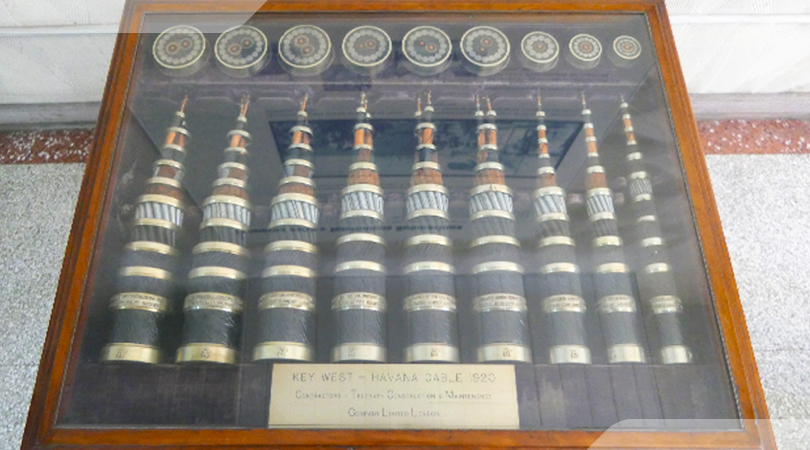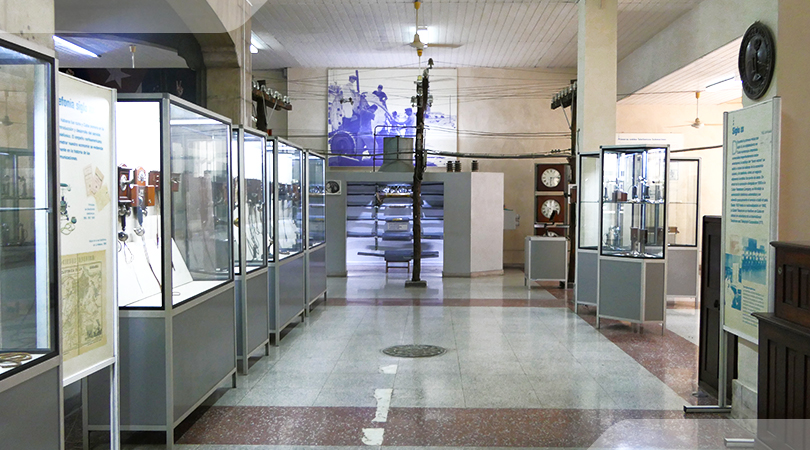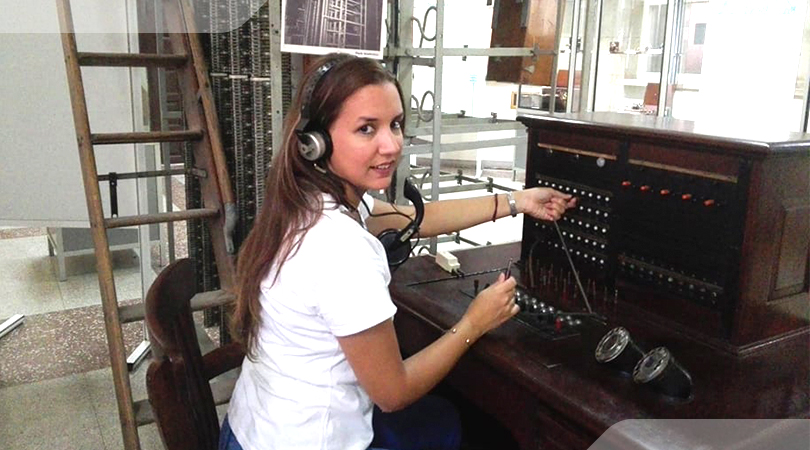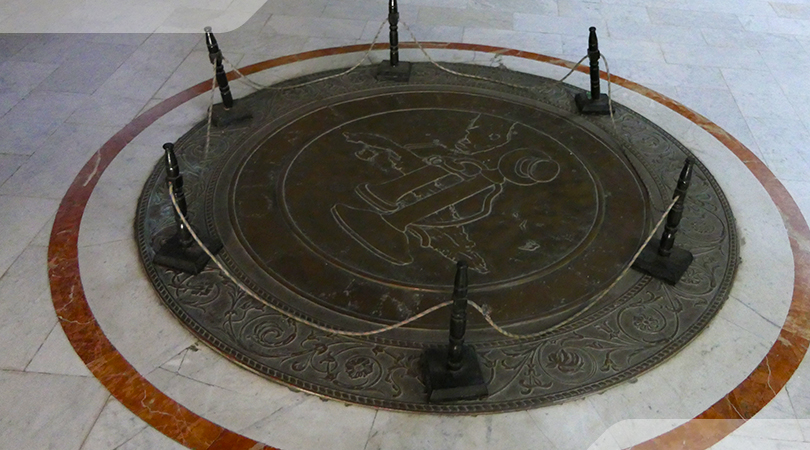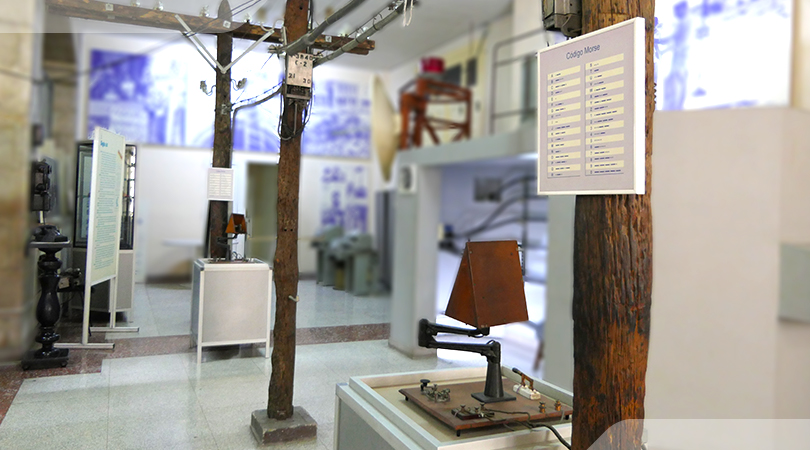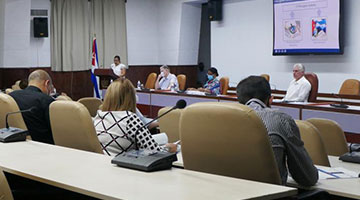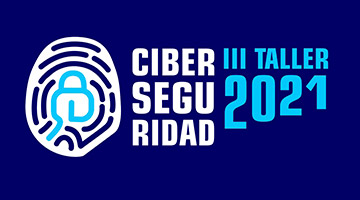NEWS
Our museum and its collaborators
On the occasion of the eighteenth anniversary of our Telecommunications Museum and the International Museum Day, we wanted to approach one of our most loyal collaborators, MSc. Lazaro Numa Aguila, a worker of our company.
Two reasons led us to this meeting, to acknowledge the fact that the entity was selected as the venue for the commemoration in the Centro Habana Municipality and to know the impressions of a man who anonymously performs a job that is almost overlooked.
Elisa Alfaro (hereinafter EA): How long have you been collaborating with the museum and why do you do it?
Lázaro Numa (hereinafter LN): All my working life has been dedicated to telecommunications. I have been working in the corner of Águila and Dragones streets long before ETECSA was founded and I placed my hands on many of the technologies now displayed in the museum.
I was one of the first people who joined as a collaborator; it was still under construction. I remember a group of colleagues looking for pieces that could make up the collection.
One day Roche asked me: "Numa, which piece do you think could be used as a museum object? I didn't think twice and answered him: The Master. I knew that the dynamics of the new times would make it look like something old and it would end up in any corner. I still remember his face when I put him in front of the old clock and explained him what it was all about. Then, I tried to rescue the collection of trophies and awards gained by the Teléfonos baseball club, which had been in display cases for years at the Union hall on Águila and Barcelona Streets.
The Master was taken down from its old place in just one week. It underwent a deep maintenance. By the time the museum was opened, it was installed. It was operational and completely restored in situ, even synchronized with the clock located in the lobby of the Telephone Exchange on the corner of Águila and Dragones Streets. I have never stopped collaborating with the museum. I have taught, advised on the collection, made proposals to include new pieces, among many others. For a long time, I have had a dream, to bring back one of the telephone booths used by the police and put it into service in the museum. In a short time, they will disappear as they are already being vandalized. If we do not manage to preserve one, there will be none left to make history.
EA: How important is it that our museum is the venue for the main commemorative event of the International Museum Day locally?
LN: A museum is not a spare room to store old junk. It is a storehouse full of stories, an open book for present and future generations, a living entity that is constantly evolving. Its function is the management and interpretation of heritage. Whoever does not know where he/she comes from will never know who he/she is and will hardly be able to know what fate has in store for him/her.
Our museum is located within another great museum, the Centro Habana municipality. Although it may not seem so, the territory has an enormous sense of belonging. The Havana downtown pulsates with life and it is the fruit and consequence of its historical evolution.
Until very recently, the Telepunto was in an area inside the museum. As a result of it, a bunch of people, while waiting for any procedure, enjoyed our exhibition hall. This was important, we must remember that the municipality is the most densely populated in the country. People identified with it and with the emblematic building, on the corner of Águila y Dragones, which is grade one as a heritage structure. These are things that impact on its visuality and recognition.
We also developed an extensive work with the surrounding schools. I remember Ian Chaviano coordinating with high schools of the territory. Circles of interest were created, the doors were opened to the elderly and a variety of cultural activities were carried out encouraging their neighbors.
One of my most important collaborations has been to establish the museum's links with the cultural entities of the municipality. Little by little I was able to bring museum directors and heritage managers. Among all of us, we were capable to create an attached classroom and trained cultural promoters of the territory. In coordination with the Institute of History of Cuba, the areas of the museum hosted the discussions of some master's thesis. The list of activities and coordination between the museum and the heritage and history entities of the municipality is extensive.
The important thing about all this is that, with lights and shadows, the Telecommunications Museum has been gaining a place among the heritage entities of the municipality and is today recognized by the population.
The celebration of the International Museum Day here is not a gift, it is the result of hard work, of a silent but consistent work, often alone, but with great desires. The importance I see in the event is that it represents the recognition of those who dedicate themselves to the management and interpretation of heritage, to the work done, but above all to the effort made.
EA: Tell us about your collection, which pieces are of your preference?
LN: The collection has to be seen as a whole, it is not only the one in showcases, but also the one in storage, which is much larger. It is necessary to understand the need for its preservation and maintenance. It is time to make the exhibits grow and, above all, to do it under the principle of interactivity. Each piece that is incorporated must be in perfect condition and working order. We have to finish new rooms, there are spaces in reserve and available.
Few people in the company know that our museum is one of the three in the country dedicated to industrial heritage. They are also unaware that it is -perhaps- the only interactive museum within the heritage genre in Cuba and, according to research I have done, one of the few in the world, as it is not a showcase museum. From this we can deduce the value of its collection.
The museum can become an important link in the sources of income of our company, we should seriously think about it. It is also time to reopen its doors, it is necessary to make people understand this need.
EA: How much more do you think our museum can contribute to the heritage development of Centro Habana?
LN: It would be impossible to make a calculation, I think the possibilities are endless, but what I am convinced of is that today it is an important place in the city. For the municipality, it is much more so, because it is a value added to its identity. To the extent that we contribute to it, we will receive from it, and I speak knowledgeably as beyond being a founding worker of ETECSA, beyond being also a historian and a sociologist, I am a local inhabitant who knows how its neighbors think and act about the company and its museum.
EA: Thank you for giving us some of your time, we would like to congratulate you on this day for your work as a tireless collaborator.
